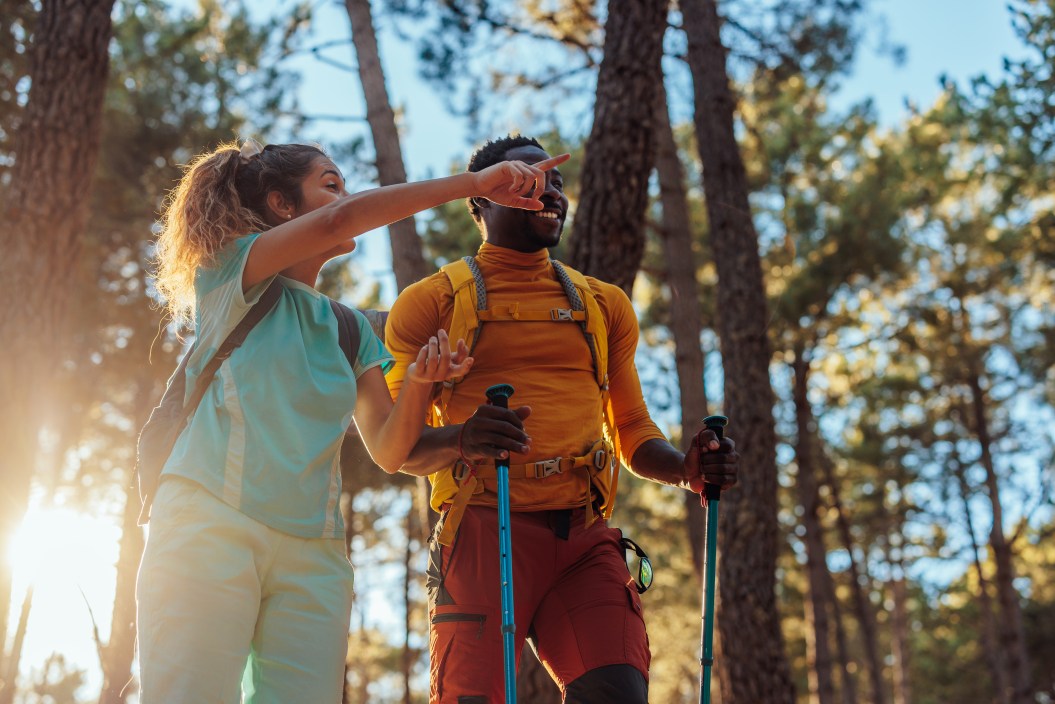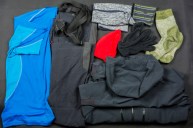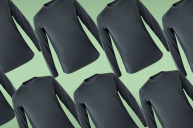Backpacking is one of the best ways to get away from crowds and experience nature in its purest state, but the wrong clothing can make a long-distance hike go south, fast.
Ordinary workout clothes can sometimes be leveraged, as they're often made of the sweat-wicking materials you'll want for staying dry out on the trail. But they aren't crafted to withstand the abrasion of your backpack plus the wear-and-tear of rock scrambles and tree snags. More-technical fabrics will also keep odors down on multi-day treks and hold up better against the extreme temperature shifts of a multi-day mountain journey.
This guide covers everything you need to know about base layers for a summer backpacking trip, plus which materials are best (and which to avoid).
Layering 101
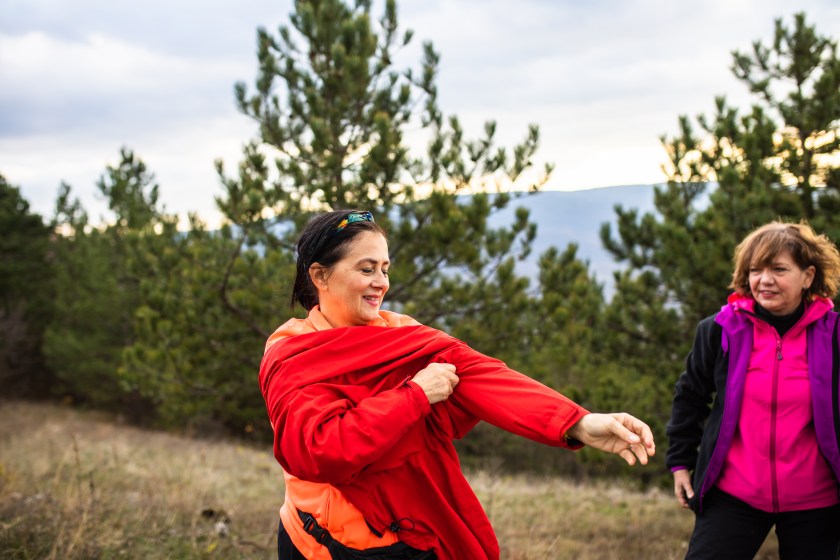
Getty Images, Aleksandar Jankovic
Backpacking layers should function somewhat like a capsule wardrobe. Every top and bottom should work well together, which will give you maximum flexibility while on the trail. This will also give you the most options—and peace of mind—should you encounter different weather and terrain.
Keep in mind the layers you choose to start your day of backpacking in will depend on the weather conditions when you depart; however, you'll want to always have on your base layers at the very least. Whether you add other layers is up to you, but starting with your underwear ensures your sweat doesn't interfere with your temperature later in the day and you're not left with a cold T-shirt when night falls—the worst!
Base Layers
Your base layer, also known as your underwear layer, should fit relatively snug against your skin. Backpacking clothes are meant to keep you dry from sweat, but that technology won't work if it isn't tight enough. If the clothing is too tight, though, you'll be uncomfortable.
Like Goldilocks, you want it to fit just right.
Make sure to have a set of interchangeable long- and short-sleeve underwear layers.
Midweight Layers
Layers that go over your base—known as your midweight layer—can be looser or baggier, depending on what you prefer. However, baggy items can add unnecessary weight, so be sure to try them out on a short hike before wearing them long-distance.
The midweight layer helps keep you warm and it's good to bring one for the evenings even if it's warm and clear outside when you depart.
Outer Layers
Light fleeces and rain jackets are your outer layer, and these are what protect you from the elements. You'll always want to carry a waterproof outer layer, even if the forecast looks perfect, because you never know how long the sun will last—and getting soaked can really sour your entire trip.
Sleeping Layers
I highly recommend bringing a separate layer for hanging out at camp and sleeping in. This way, they stay clean and dry so you can stay warm in your sleeping bag.
READ MORE: I've Backpacked Thousands of Miles and These 8 Luxuries Are Worth Their Weight
What Layers to Pack
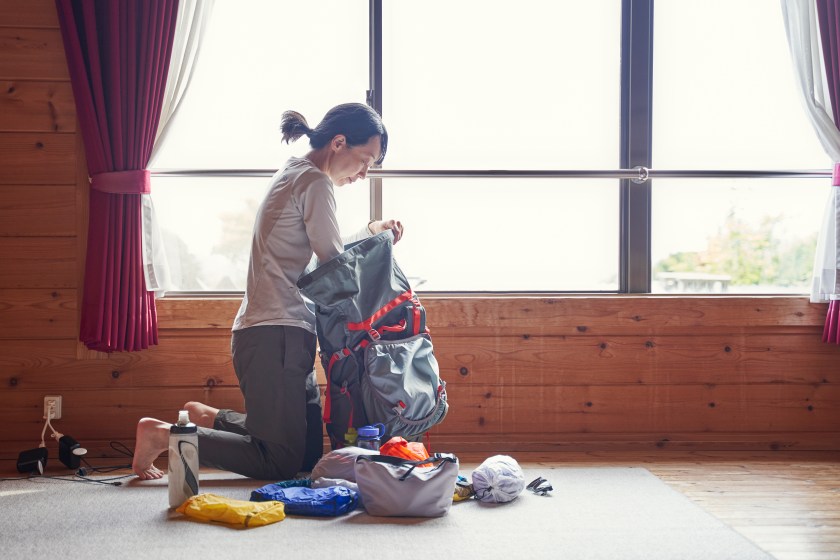
Getty Images, Yagi-Studio
Preparing what clothing to bring on a backpacking trip requires you to strike the right balance. You need to stay cool when you're working up a sweat during the day, but you also want to be warm once the sun goes down. It's a bit of a science but is one you'll get the hang of in time!
Basic Layers
For daytime, opt for a comfortable T-shirt made for long distances. Columbia's Alpine Chill Zero men's crew shirt is specifically designed with technology that wicks away sweat, protects against UV rays, and keeps you cool while neutralizing odors. The Women's Fuseknit Tee from Craft is made to handle both sweat and dirt. Also designed for long distances, the knitted polyester material is perfect for keeping you dry throughout the day and can hold up better than your average day hiking T-shirt.
Beneath that, you might opt for a longline sports bra such as Girlfriend's Paloma Racerback, which has a UPF (ultraviolet protection factor) 45+ rating and can double as a tank top if your T-shirt gets too hot. You'll likely want a fresh tee and bra for every day of backpacking, FYI!
For bottoms, basic hiking shorts will do. But look for features such as tear-resistant fabric, pockets, and a built-in belt that you can make tighter as needed. The REI Trailmade Amphib shorts check all of these boxes. Bring one pair of bottoms for every two days.
Warm Layers
Nights on the trail can get as cool as the days are hot. But since you won't have room to bring your winter parka, you'll have to get strategic about which warm layers you bring. It's best to have a long-sleeve hiking shirt that you can put on over your T-shirt, or in place of it, if you're still hiking early or in the evening.
Smartwool makes durable long-sleeve midweight layers, such as the All-Season Merino Base Layer, which is made from eco-friendly dye and boasts extreme softness as well as moisture and temperature regulation. It also makes the Men's Classic All-Season Merino ¼ Zip, which is soft, lightweight and designed to work in both cold or warm weather while wearing a pack.
Bring one midweight layer for every two days of hiking. It's also a good idea to bring one light fleece to wear at night.
Next, bring at least one pair of trail-ready pants. We prefer a versatile pair with pockets, zippers, and a lightweight material, such as the 511 hiking pant or the PrAna Halle jogger II. You can't go wrong with Icebreaker's Women's 200 ZoneKnit leggings, which are made from Merino wool and help regulate body temperature. The Summit Track Pants from Girlfriend, made from recycled water bottles, have ankle zippers that allow you to keep your shoes on when changing—making them a great option for lounging around camp or for shorter distance days.
Lastly, consider bringing a separate pair of Merino wool socks to sleep in, plus a fresh pair for each day of your journey. Meindl Merino Wool and Darn Tough are both designed to keep feet toasty and moisture-free while preventing blisters. Trust us, they're well worth the investment!
READ MORE: After Hiking Hundreds of Miles, These Are the Best Hiking Socks I've Found
Weather-Dependent Layers and Outerwear
A light-yet-warm hooded jacket is an essential piece of outerwear when hiking. Rain isn't going to be the most welcome guest on a backpacking trip, and it's important to be prepared for it. Just beware of water-resistant fabric, which won't keep rain away as much as a waterproof jacket. We suggest looking for Gore-Tex or an equivalent, which is one of the best waterproof materials out there!
The Pro Trail Jacket has a durable, breathable, and waterproof outer shell and fully taped seams, plus enough ventilation to release body heat and keep you regulated. Cotopaxi's Cielo Rain Jacket has similar waterproof and breathability features.
Best Layer Materials
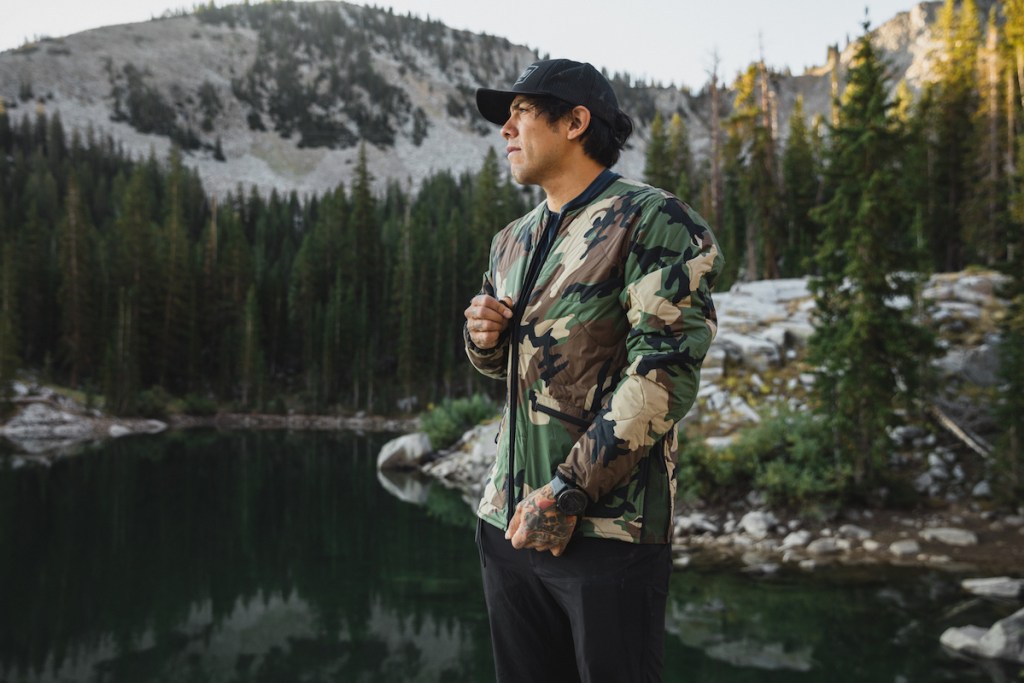
Beyond Clothing
Material is one of the most important factors when choosing what clothing to bring on a backpacking trip. Some hold moisture and will physically weigh you down; others will allow airflow but will feel paper thin if the weather turns cold.
Not all backpacking clothing materials are created equally, but there are some you should always opt for—and others steer clear of entirely.
Cotton
The worst material to wear backpacking is cotton. If you're a seasoned hiker, you likely already know this; but if you're new to the anti-cotton train, hear us out. Cotton is bad because it doesn't wick sweat at all. Instead, it gets heavy, wet, and soggy, which not only makes you cold but also weighs you down. If you walk through a splashy stream, sweat in the sun, or endure a small drizzle, that water can stay with you. You shouldn't bring any cotton layers backpacking, from your undies to your pants.
Merino Wool
Unlike cotton, Merino wool is a go-to favorite hiking material. Merino sheep produce wool that's softer and can be spun thinner than ordinary wool. So in addition to being less scratchy, it helps regulate body temperature. When it's hot outside, Merino absorbs sweat to keep you cool; and when it's cold, Merino traps heat to keep you warm. Socks, underwear, and shirts or leggings are the best layers to get in Merino.
Synthetic Materials
Synthetics such as polyester and nylon are solid picks for hiking because they're breathable and minimize sweat but won't weigh you down like cotton. These materials are best for midweight layers such as leggings, pants, and long sleeves. They'll add warmth if needed but keep you cool when you're hot. The slicker feel of these materials is good for fighting abrasion from your pack, too.
Bamboo
Bamboo has great ventilation and will also help absorb sweat. While this fabric isn't as popular as synthetic materials or Merino, it can be a softer and more eco-friendly alternative to synthetic materials, which are often byproducts of fossil fuels.
Blends
Most hiking midweight layers are blends of synthetic materials, or they are synthetic materials mixed with Merino wool or bamboo. A Merino-polyester combo can be softer than a pure Merino layer, especially if you find the wool scratchy on its own. Blends are great to wear backpacking—just make sure they don't include any cotton.
READ MORE: 10 Hacks to Make Backpacking Meals Taste Better
